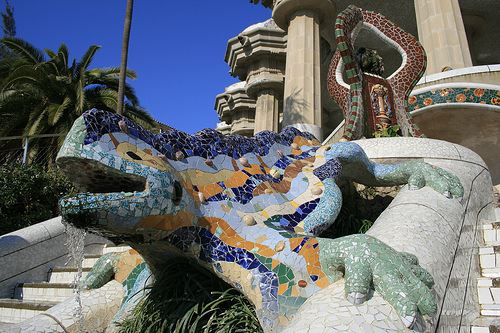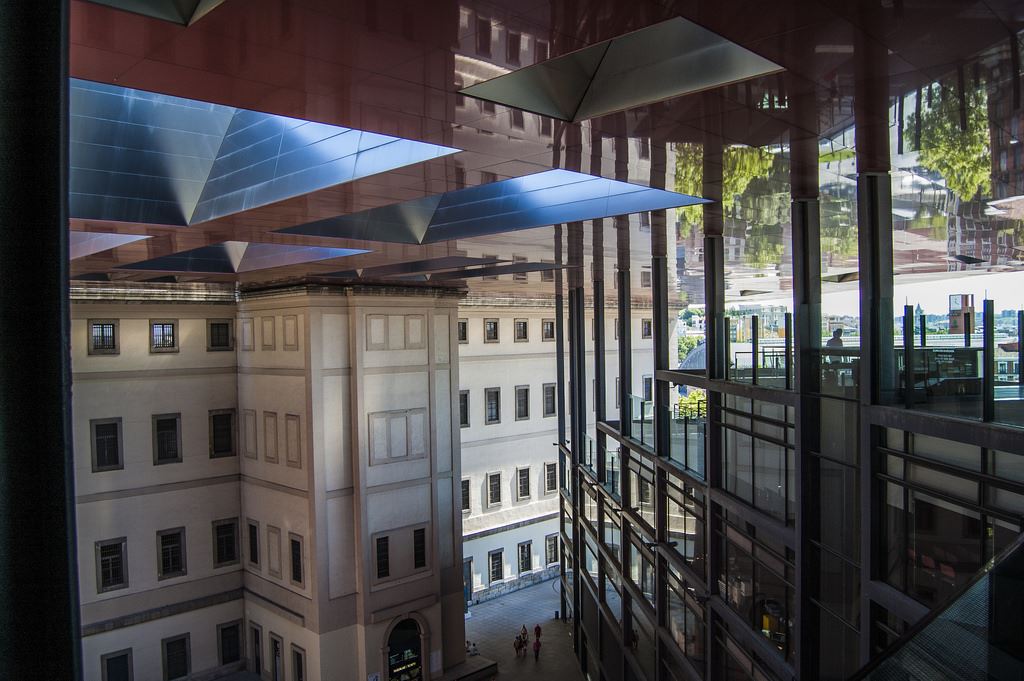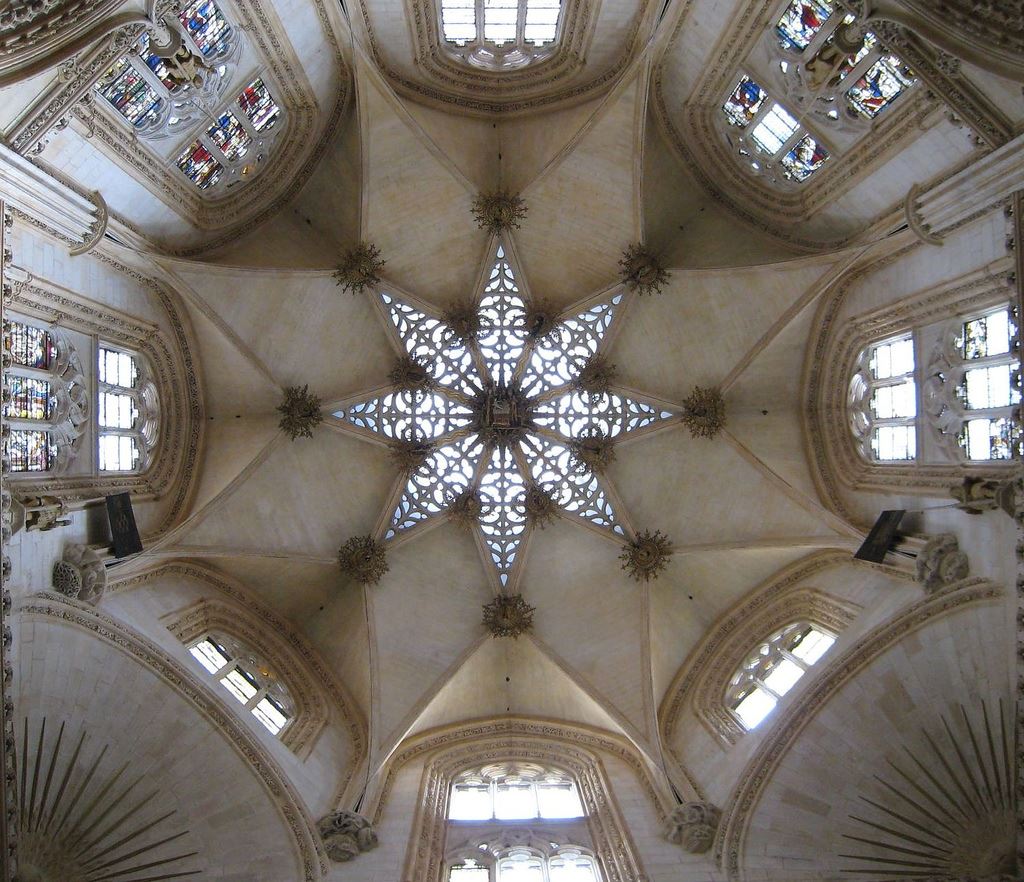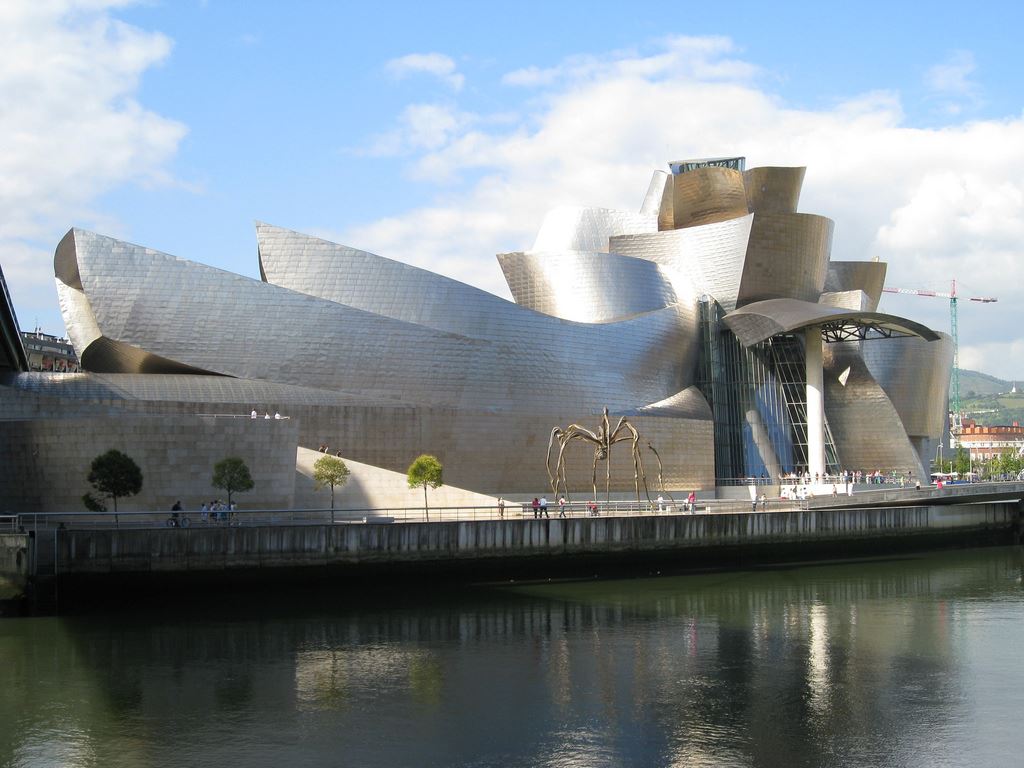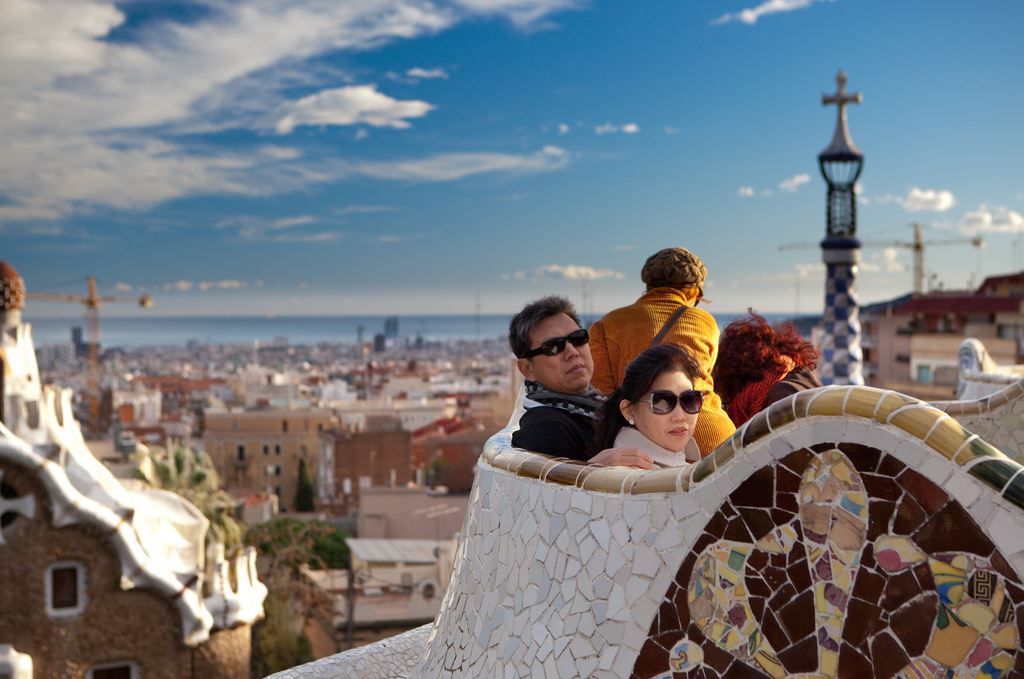With an over-whelming number of UNESCO-listed monuments and world-class museums in Spain to choose from, visitors always need help when selecting which to visit. Here at Totally Spain, we’ve been putting together custom itineraries since the year 2000 and share our shortlist of the 15 best museums and monuments in Spain…
Best Monuments & Museums in Spain
Must-See Monuments & Museums in Barcelona
This must be the busiest building site in the world. Work commenced in 1882 and one year later Gaudi was drafted in to the project – where he worked until his death in 1926. Funded by private donations and entrance fees (a whopping 3.2 million people visited the Sagrada Familia in Barcelona in 2014), the church will be completed some time this century. Why visit? All of Gaudi’s buildings are spectacular (and seven of them including this one are on UNESCO’s World Heritage List) but there is something unique about the scale and ambition of this building that is beautifully offset with delicate features and soft muted light inside. Did you know that Gaudi is being considered for sainthood? Here’s the BBC article about that process. Whether you agree with sainthood debate or not, you can’t help feeling that the Sagrada Familia is an astonishing feat of architecture and a testament to the tenacity and vision of Catalonia’s most famous son.
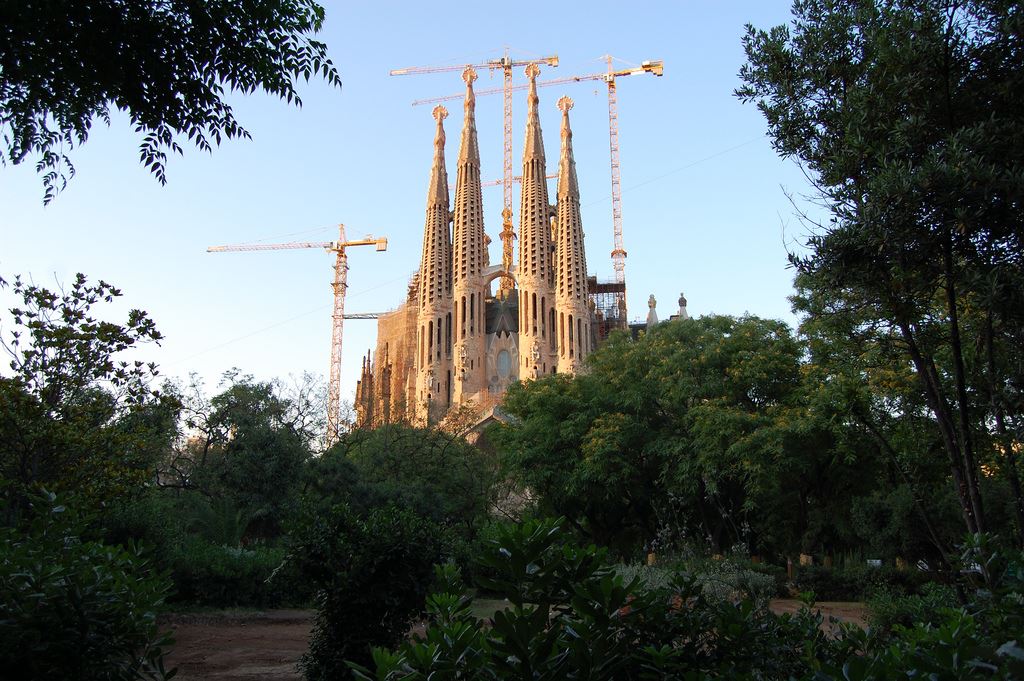
Gaudi’s golden Sagrada Familia in Barcelona. Photo credit: Sagrada Familiar via photopin (license)
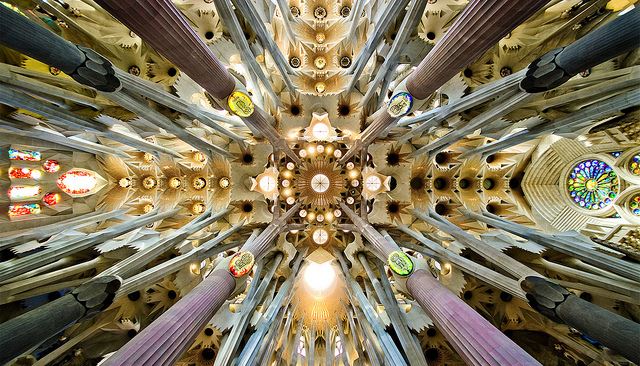
We love the inside of the Sagrada Familia as much as the outside. Go along and decide for yourself which you prefer. Photo credit: SBA73 via photopin cc
Fresh from its recent facelift, the Casa Mila or La Pedrera (meaning stone quarry) in Barcelona is looking better than ever. The limestone-clad building is a fine example of the Modernist or Catalan Art Nouveau style. It was Gaudi’s last civil commission and shows him off as a true genius of structure and form. Completed in 1912 it became part of the World Heritage list in 1984. Today it’s the headquarters for Catalunya-La Pedrera Foundation. Why visit? Its organic geometry, roof sculpture garden and figure eight shaped courtyards are just some of the reasons you have to see this space. Take a tour by day or night and learn some of the many stories connected with this building including the reason why Gaudi nearly walked away from this commission but was convinced by a priest to stay on the job.
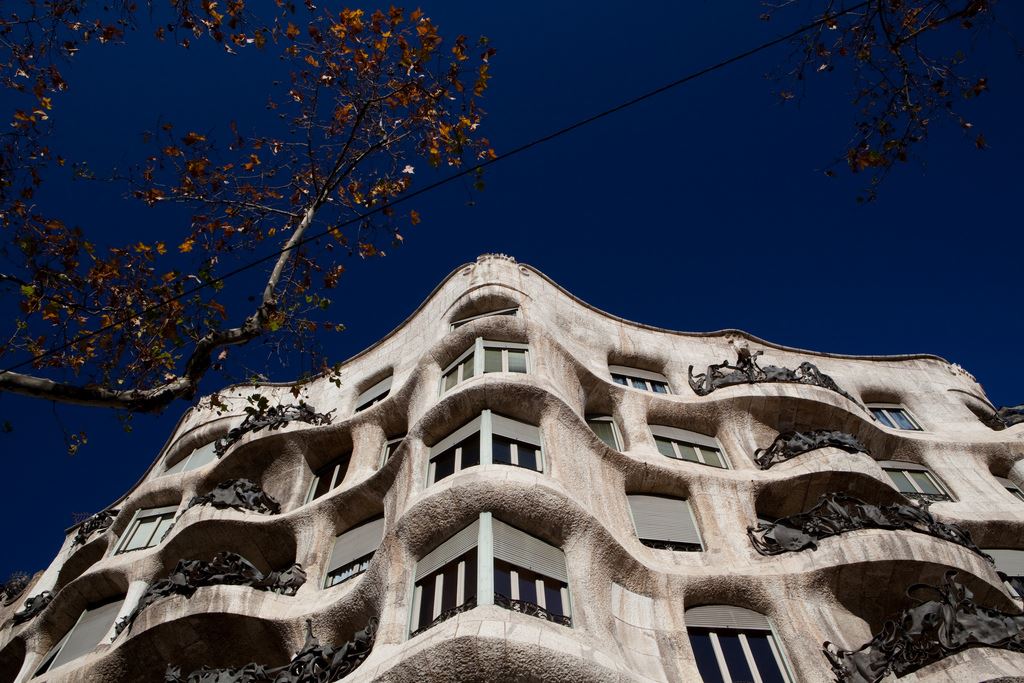
Organic forms dominate at the Pedrera or Casa Mila in Barcelona. Photo credit: IMG_3747 via photopin (license)
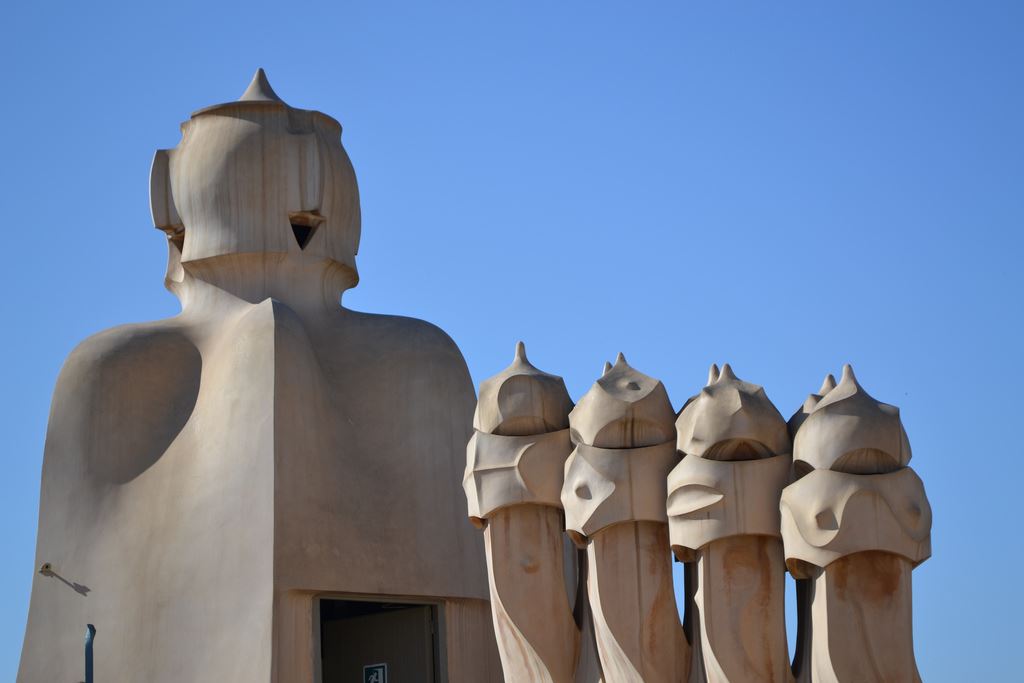
Casa Mila or Casa Pedrera designed by Gaudi in downtown Barcelona. Photo credit: The General stands over via photopin (license)
This park was designed by Gaudí for the Catalan entrepreneur Eusebi Güell. Work commenced on what was to be an exclusive housing development on the outskirts of Barcelona in 1900 but the demand wasn’t there and just two of the planned 60 houses were built. Gaudí bought one of the show houses in 1906 and continued working on the project until 1914. Count Eusebi Güell’s family gave the land to the city after his death and it was opened as a public park in 1926 – the year of Gaudí’s death. In 1984, it was added to the list of UNESCO World Heritage sites. The Town Hall is deliberately trying to restrict numbers to protect the attractions from deterioration and the entry fee introduced in 2013 has seen visitor numbers fall from 9 million annual visitors in 2013 to 2.5 million in 2014. Why visit? The park has some of the best views of the city and it’s a must for anybody interested in both Gaudí outdoor architecture and his interiors. We love the wild combinations of influences (Romanesque, Moorish and Gothic) and materials (ceramic, tile and rough stone sculptures) and the curved paths, the mosaic animals, the iconic park benches and bridges that cross over each other at different levels. (For more info on Barcelona’s best-known architects, read our guide to Gaudi’s Barcelona.)
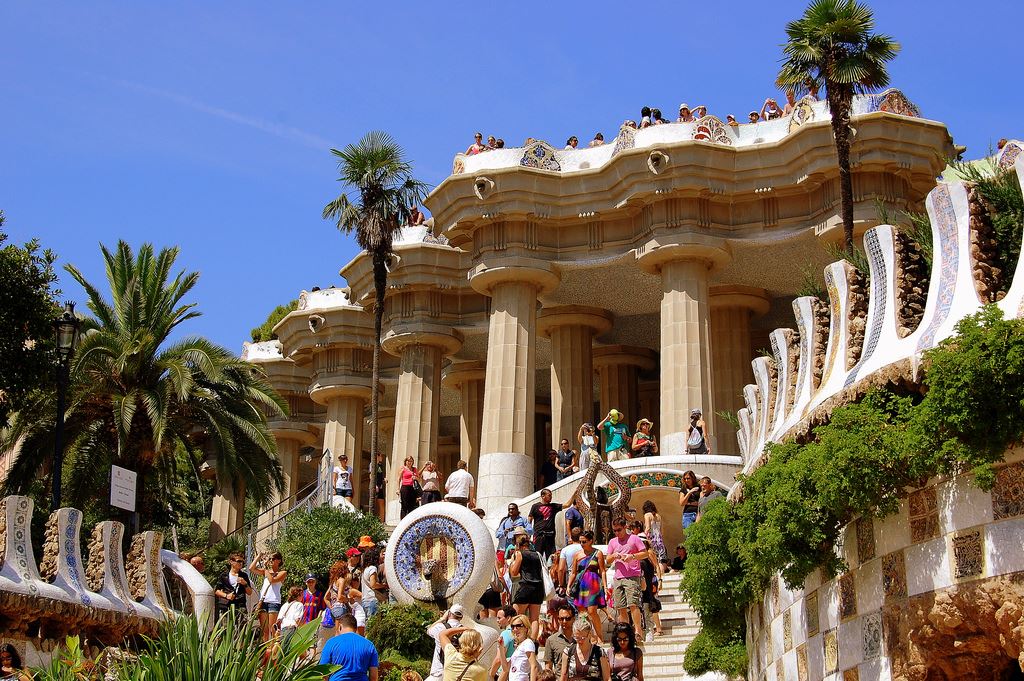
An upmarket housing development like no other – Park Guell in Barcelona. Photo credit: Parc Güell, Barcelona via photopin (license)
4 Palau de la Musica Catalana, Barcelona
The stunning Palau de la Musica from 1908, by modernist Lluís Domènech i Montaner, is one of the world’s major concert halls and an excellent example of Catalan modernism. It is the only concert venue in this style to be listed as a World Heritage Site by UNESCO (1997). Why visit? You’ll get a different perspective of the Catalan Modernist or Art Nouveau style and see that architecture in Barcelona isn’t just about Gaudi. Seek out the floral motifs inside and marvel at the central skylight by Antoni Rigalt i Blanch.
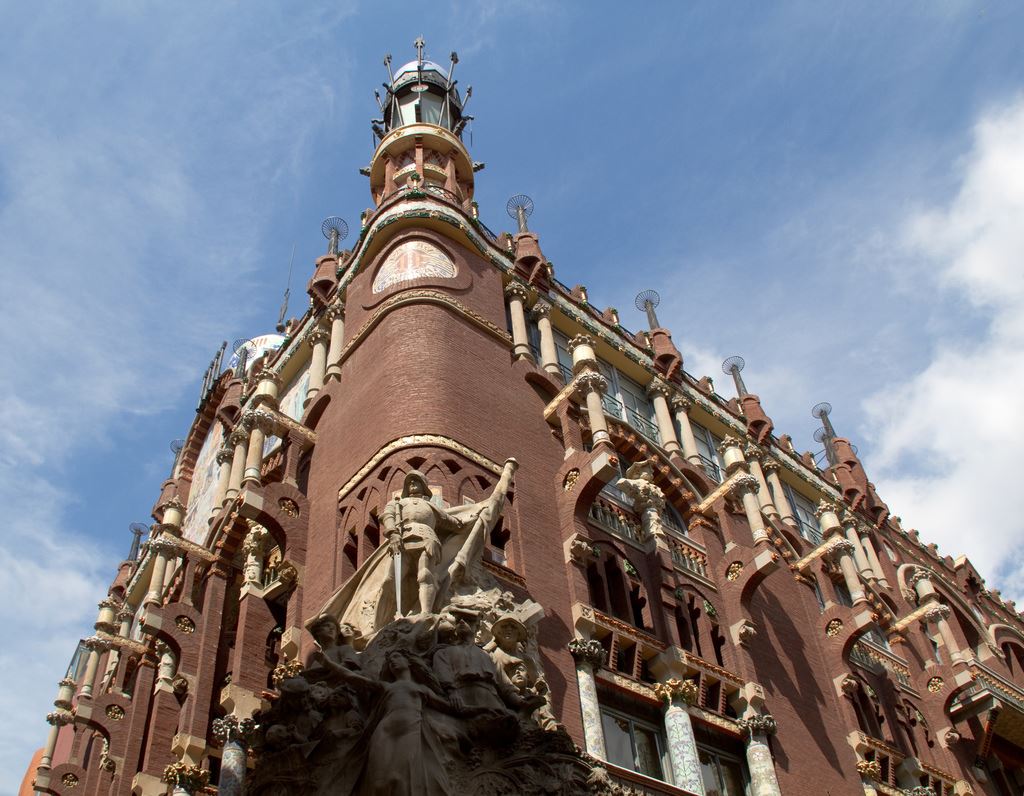
The Palau de Musica Catala in Barcelona. Photo credit: Palace of Music 12 via photopin (license)
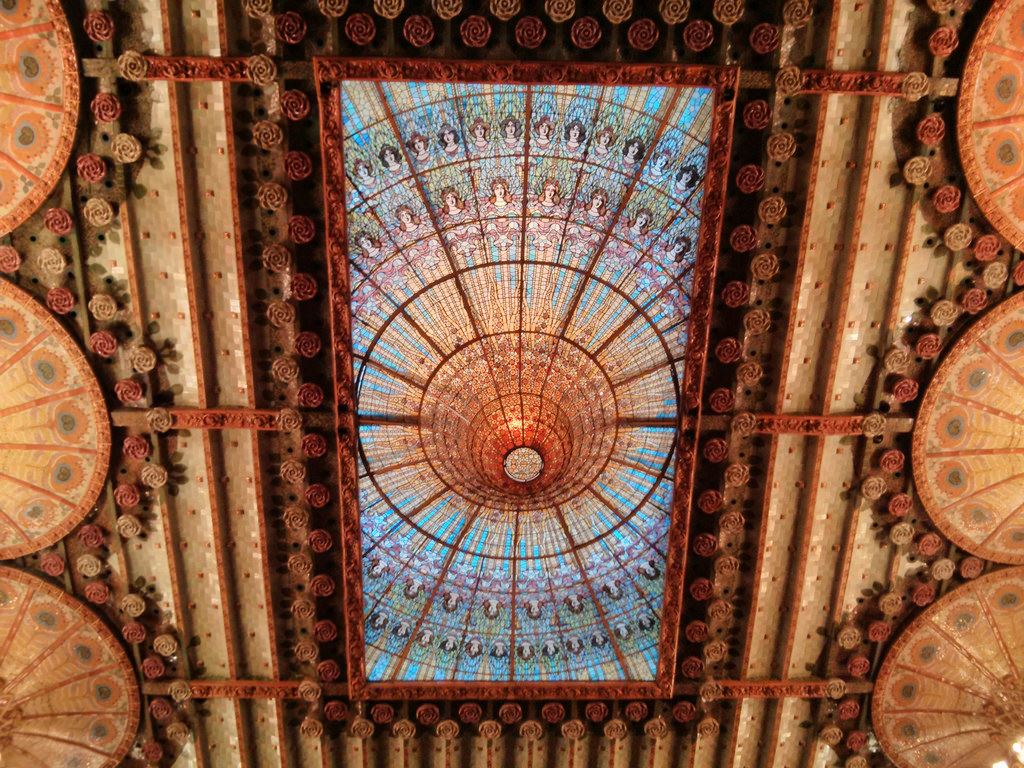
The stained glass and ceiling floral detail at Palau de la Musica in Barcelona. Photo credit: Palau de la Música Catalana via photopin (license)
Must-See Museums & Monuments in Madrid…
Located on the site of an alcazar and the former palace that was destroyed by fire in 1734, the Royal Palace in Madrid was completed in 1751. It’s best known for its painted frescos and the artwork through it pretty impressive – you’ll find paintings by Velázquez, Goya, Rubens, El Greco and Caravaggio. Plenty of great tapestries also. Historians will enjoy seeing Charles III’s bedroom designed by Sabatini and The Royal Armoury, hailed as the best European collection together with the Imperial Armoury of Vienna, which are both attributed to the Hapsburgs. Why visit? It’s like a back catalogue in interior decoration as each of the rooms represents a period in time and a style in fashion. We love the Chinese Room for its colour. And the nearby gardens are wonderful too.
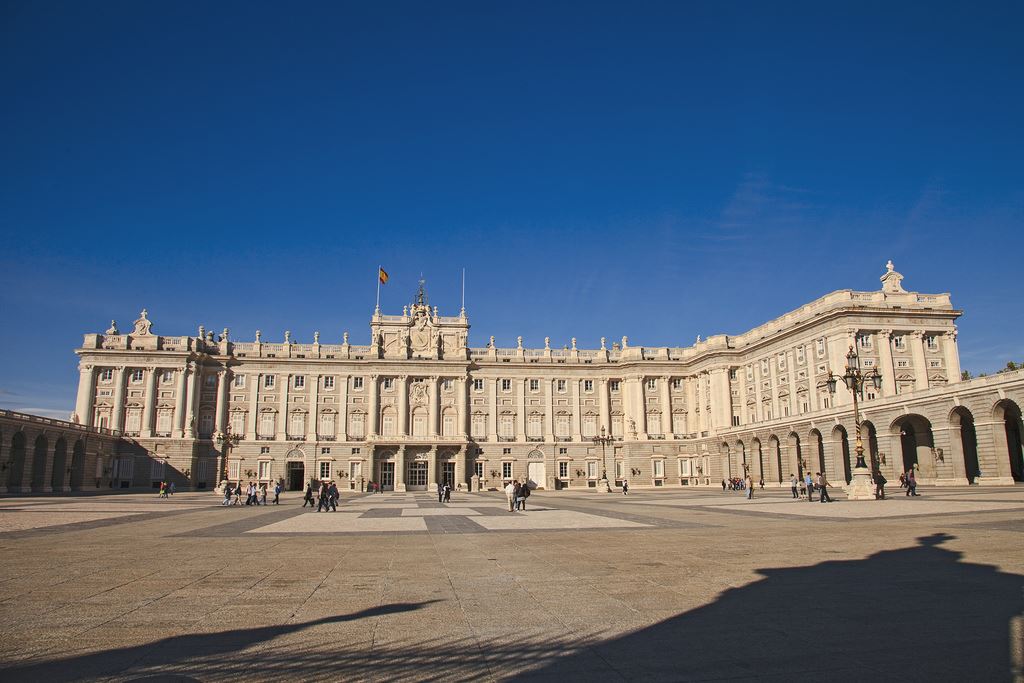
The Palacio Real or Royal Palace in Madrid. Photo credit: Madrid. Royal Palace. Spain via photopin (license)
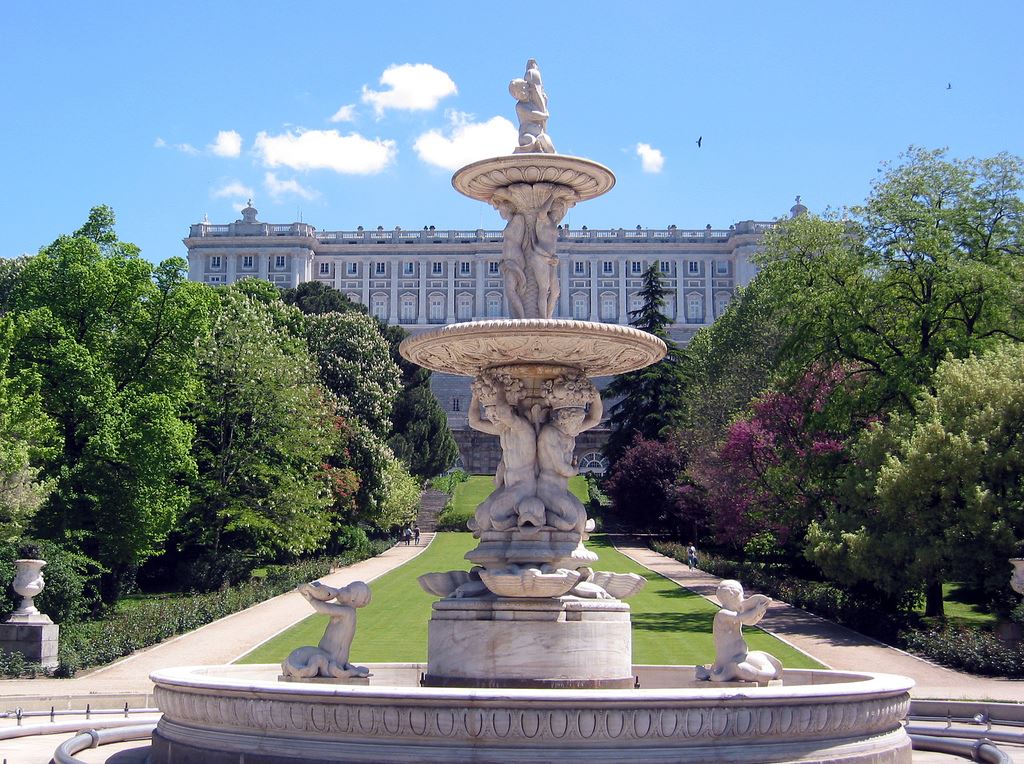
The view of the Royal Palace in Madrid from the Jardines del Moro Park. Photo credit: Palacio Real de Madrid, Jardines del Moro via photopin (license)
We recommend clients see at least one of the three major galleries in Madrid. The best known and oldest is the Prado that features works by all the key Spanish painters and many European masters. We recommend an expert guided tour for clients that are very interested in particular sections of the museum – have a look at some of the collections here on the museum website. Why Visit? Can you really come to Spain and not see a Goya, Velazquez or El Greco?
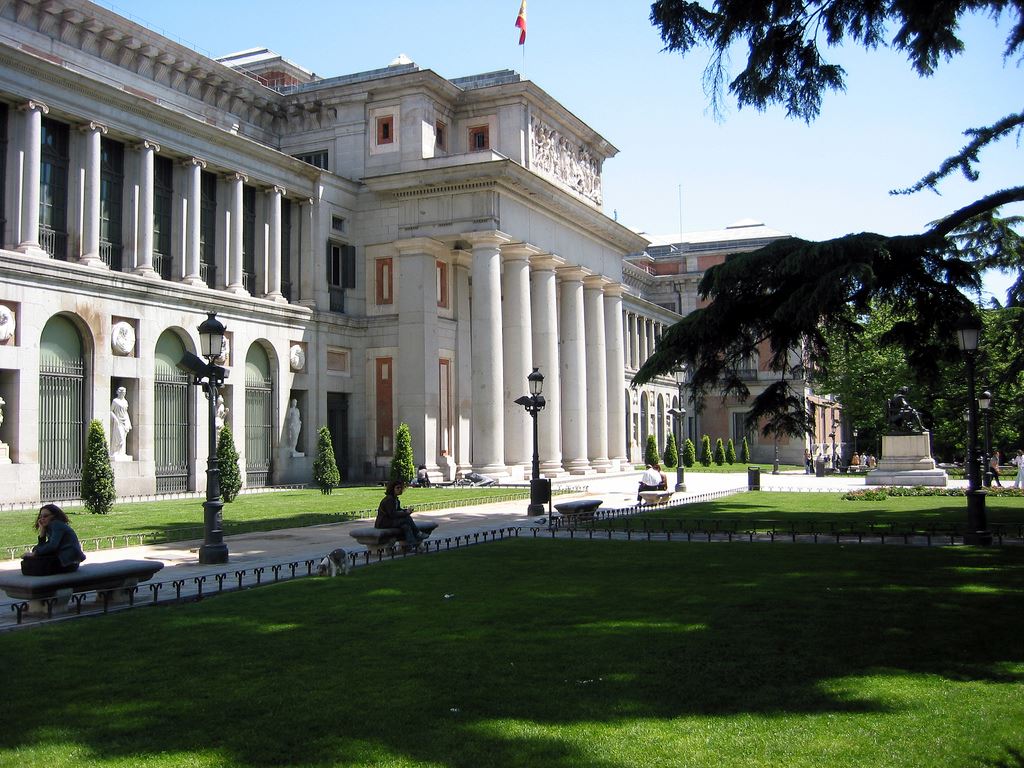
The Prado Museum in Madrid. Photo credit: Museo de El Prado via photopin (license)
3 Reina Sofia Museum in Madrid
It’s sometime hard to sell a second art gallery after the Prado but the Reina Sofia does a wonderful job of setting itself apart from an architectural point of view and from its work on show also. We love all the Spanish artists here – you’ll find Juan Gris, Joan Miro, Eduardo Chillida and Antoni Tapies, and of course, Salvador Dali and Pablo Picasso. And although the focus is defiantly on Spanish art and sculpture, you’ll also find some pieces by Max Ernst, Richard Serra, Damien Hirst, George Braque and Francis Bacon. Why visit? You have to see the museum’s most famous piece – Picasso’s 1937 Guernika and the accompanying sombre but moving collection of drawings and related works by the Spanish painter, poet and sculptor.
With two amazing art galleries of world-class stature, it was a brave move by the baron’s Spanish widow to bring her husband’s private collection to Madrid. Her bravery paid off and Madrid is now as proud of its newest private collection as it is of the two publicly funded institutions. In addition to some wonderful European pieces by Francis Bacon, Paul Klee and Paul Cezanne, we love the impressive collection of American painters such as Edward Hopper and Mark Rothko. Why visit? Being a private collection, this gallery exudes personality and you are instantly at home in the space. Unlike in the other two museums where you’ll find entire rooms by a single painter, this museum might only have one work by each of the big names – so you can move quite quickly between art movements and styles and emerge enriched without being exhausted. You might also want to check out the museum’s roof garden restaurant! And see what else to do in Madrid here.
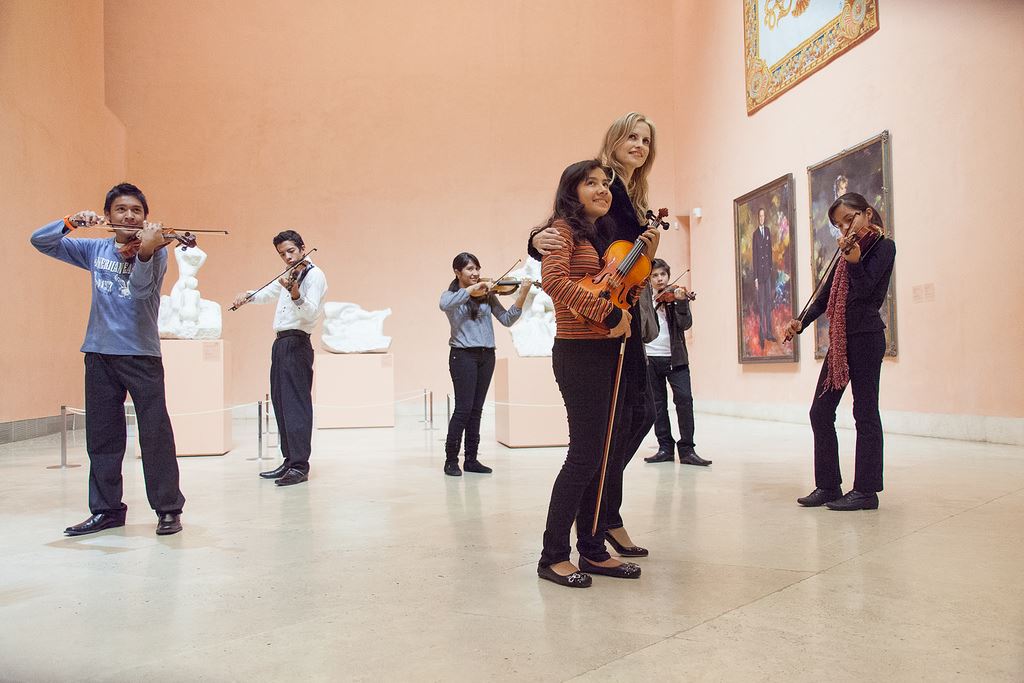
The Thyssen-Bornemisza Museum in Madrid. Photo credit: Ensayo y concierto via photopin (license)
5 El Escorial Palace, El Escorial, Madrid
Often labelled as cold and austere and disregarded as a folly of its creator, we recommend El Escorial palace and monastery as the best way to understand King Phillip II (1527-1598), who’s titles included King of Spain, Lord of the 17 Provinces of the Netherlands, King of Naples and Sicily, King of Portugal and even King of England & Ireland (through his marriage to Queen Mary) among many others. What’s so interesting about this particular Royal? Spain’s Golden Age, the Counter-Reformation and the Spanish Armada disaster all took place on his watch. Why visit? The gardens are beautiful, the Palace rooms are breathtaking and the Pantheon of the Kings in the Royal Crypt of the monastery is also very interesting. Fans of architecture will enjoy the clean lines and when you’re finished with your visit, the nearby village of El Escorial itself is also very pleasant. El Escorial is one of our recommended day trips from Madrid and on our shortlist of the best churches and cathedrals in Spain too!

El Escorial Palace outside Madrid. Photo credit: El Escorial fachada meridional 1 via photopin (license)
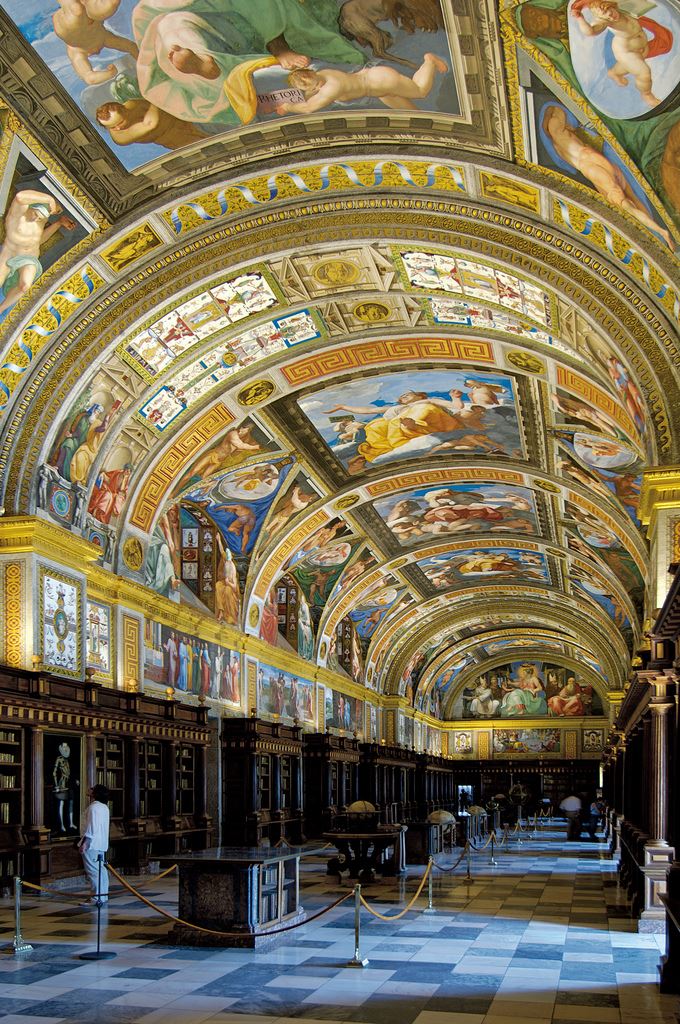
The Library at El Escorial Palace outside Madrid. Photo credit: MADRID_060623_MXALX_109 via photopin (license)
That brings us to the end of the Madrid monuments. Now you have to decide whether you are travelling next…
Must-See Museums & Monuments in the North of Spain
It’s not exactly Northern Spain but it is North of Madrid and it’s on the AVE train line that goes north from Madrid to Bilbao. Jump in a cab at the station in Segovia and get dropped off in the city centre. Walk through the golden walled streets to visit the awe-inspiring 11th century Alcázar that was a residence for many of Castile’s monarchs including Phillip II who added the sharp slate spires which give it a Central European feel. The castle is now a museum and houses military archives. Why visit? We love it for its contrasts – although fairylike from the outside, it’s armoury displays offset the Disney-esque feel you have on arrival and help you see this as the fortress it was. Kids always love this location and if they are game for more, take them to 16th century gothic cathedral and the amazing Roman aqueduct on the edge of the town which is truly spellbinding. (Want to see more castles and alcazars in Spain?)
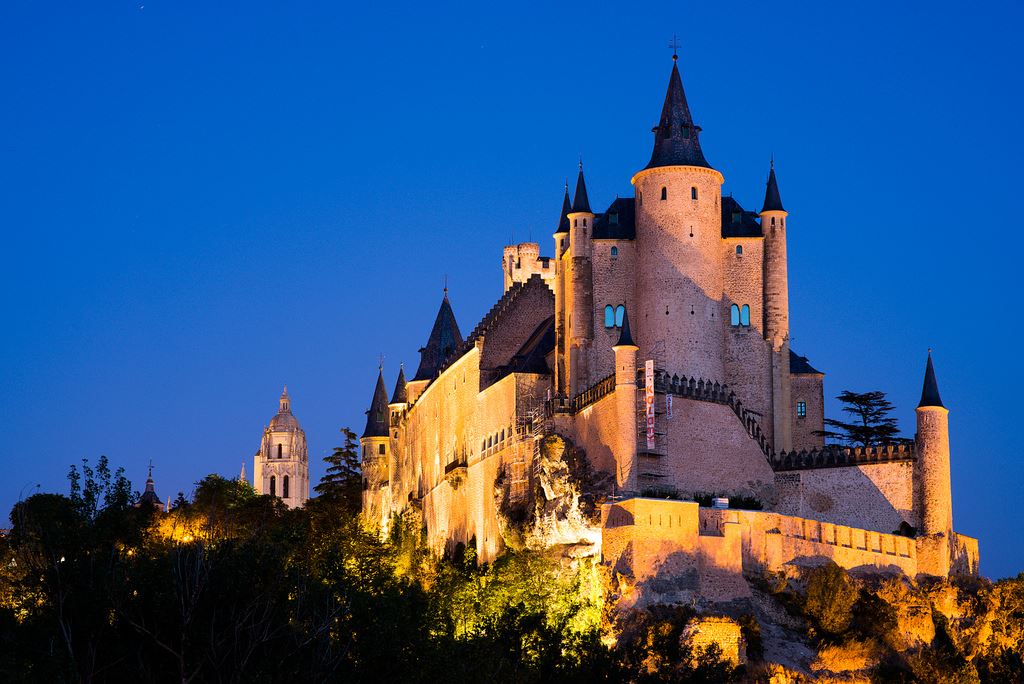
The Alcazar in Segovia. Photo credit: Alcázar de Segovia via photopin (license)
The Cathedral of our Lady of Burgos is the only cathedral in Spain to secure a World Heritage listing on its own merits. Construction began in 1221 by Ferdinand III and when the high altar was consecrated in 1260, it operated as a working church. Work was finally completed in 1567. Why visit? We can’t put it any better than the UNESCO World Heritage list which says “the entire history of Gothic art is summed up in its superb architecture and its unique collection of works of art, including paintings, choir stalls, reredos, tombs and stained-glass windows.” We adore the stunning carvings, the golden staircase, the stained glass, the cimborrio over the high altar, El Cid’s tomb and the Star of David. The scale and craftsmanship is overwhelming. Look out for the Papamoscas puppet that tells the time. And keep an eye out for Camino de Santiago pilgrims – you’ll see quite a few here taking the French Way to Santiago de Compostela. (Want to learn about more of Spain’s top churches and cathedrals?)
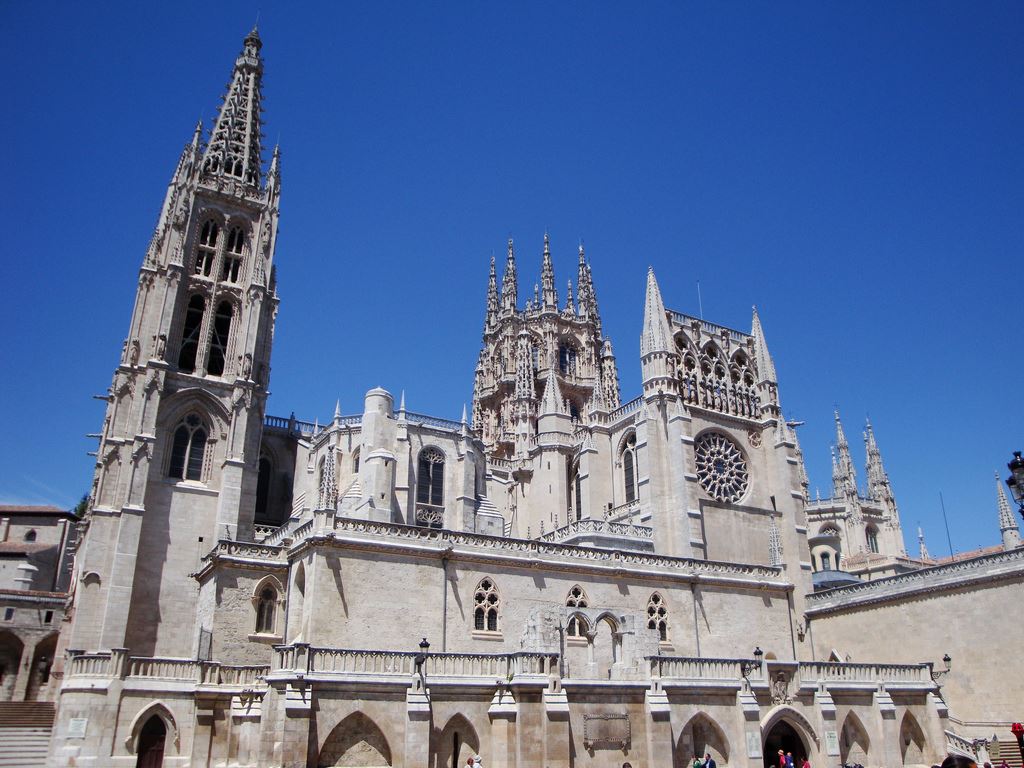
The Cathedral in Burgos. Photo credit: BURGOS 274 via photopin (license)
Bilbao on the Northern Coast of Spain is a modern design-driven city with a seafaring and industrial past. If Frank Gehry hasn’t already been given the keys of the city, he should be handed a few as soon as possible. His interpretation of the city into the titanium-clad art museum has become a reference point for urban regeneration everywhere as the Guggenheim effect. Why visit? Not only is the building stunning and the permanent collection inspiring, but the walkways and sculptures, cafes, parks and playgrounds around the museum make this the perfect family day out. Take a pic of the huge Puppy by Jeff Koons and walk alongside the riverbank taking in the many wonderful sculptures and the funky grass-lined tram tracks to the Siete Calles in the old quarter. Later check out the Fosteritos and see Philippe Starck’s Alhondiga near the Gran Via. (Read more about visiting Bilbao and the Guggenheim and nearby wineries.)
Must-See Museums & Monuments in Andalusia
The first thing that strikes you about the Mezquita or mosque is its size. It’s a whopping 23,400 m² which is more than three soccer pitches. The original Mosque was built between 786 and 788 by Abd ar-Rahman, but over the centuries, many additions and extensions have been made. Following the Christian conquest it was consecrated as a Cathedral in 1236. It received 1.56 million visits in 2014 so it’s one of the heavy hitters. Why visit? We love the sense of history to this mosque within a church monument. There are many examples of Catholic churches in Spain that had previous lives as synagogues or mosques but nowhere else is this so evident. It’s hard not to be moved by the sheer size (there are a whopping 856 columns), the variety of architectural styles (sometimes in harmony) and the sense of cultures colliding. When you leave the mosque, make sure to take a walking route of the patios which are the city’s public courtyards – especially beautiful in May when the Patio Festival is held.
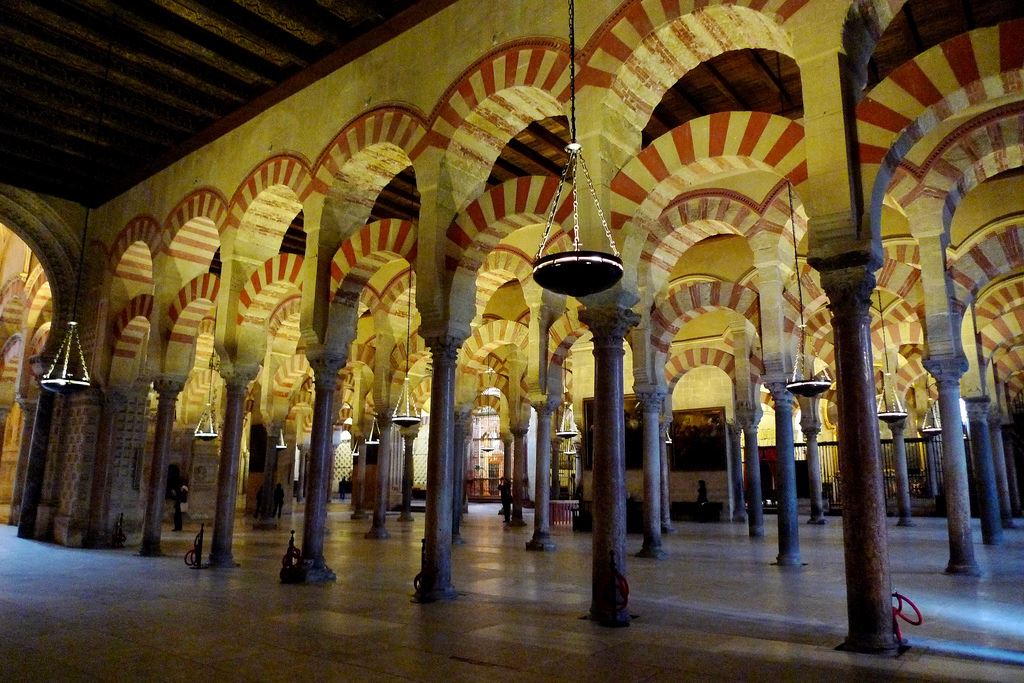
The Mezquita of Cordoba. Photo credit: Mezquita Interior via photopin (license)
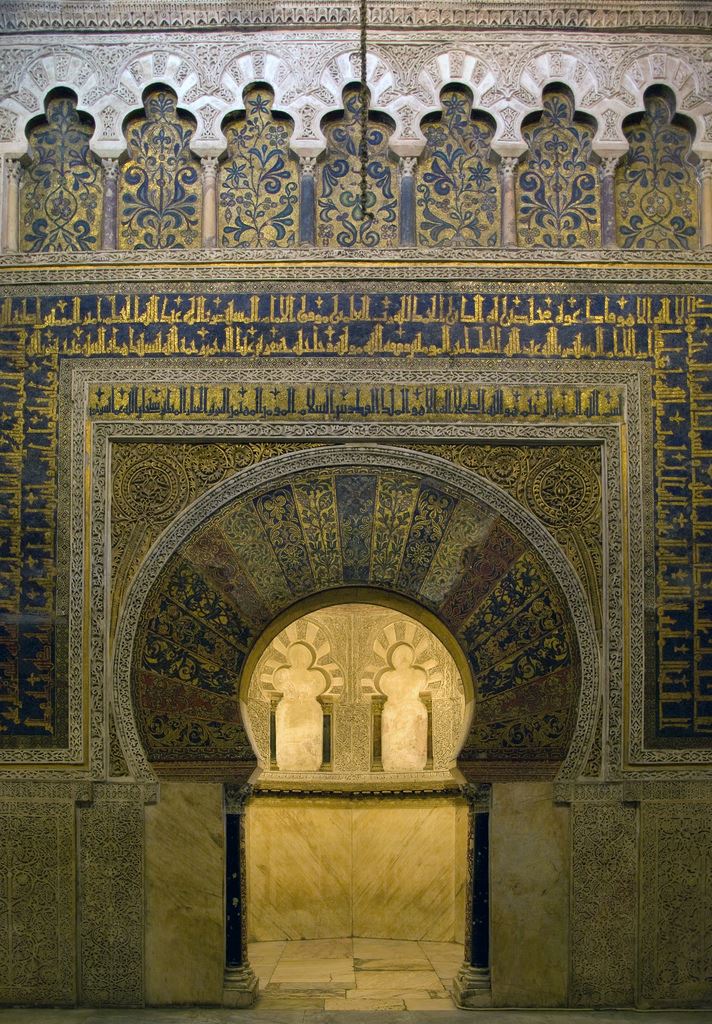
Inside the Mesquite in Cordoba. Photo credit: Moorish part of the Mezquita, Cordoba via photopin (license)
In Spain, we tend to rave about the cathedrals, and its true that they are wonderful. If we had to pick one, we would probably choose the UNESCO-listed Gothic cathedral in Seville which is said to be the largest Gothic building in Europe and the third largest church in the world (after St Peter’s in Rome and the basilica in Brazil’s Aparecida). Standing on the site of a great mosque from 1184, you’ll also find Mudejar, Renaissance, Baroque and Neo-classical styles, plus the old minaret of the Arab mosque inside the current structure. Why visit? We love the sheer size of the place – it’s huge. When we visit we like to explore some of the 80-odd chapels, see the mausoleum for Christopher Columbus, climb the ramps to the bell tower (called the Giralda) that offers outstanding views over the city and enjoy the beauty of the Patio de Los Naranjos (Courtyard of the Orange Trees) beside the cathedral. If you’re lucky you might catch a choir or maybe even a wedding – if you time it properly – this is one of the churches where Spain’s high society congregate so any event is likely to be eye-catching. While in Seville, check out our guide to Unusual Seville and Andalusia.
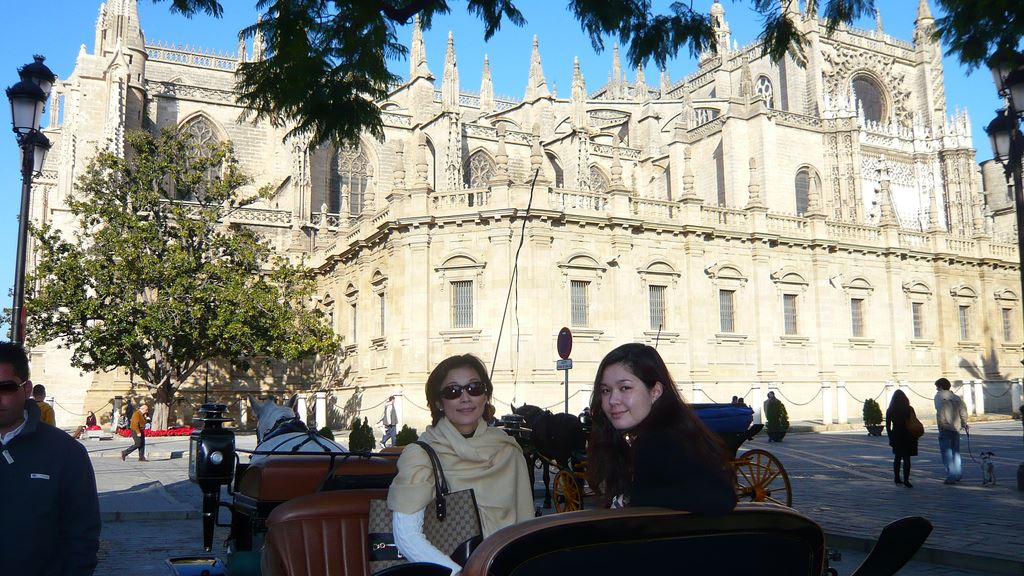
Enjoying the views of Seville Cathedral. Photo credit: Seville Cathedral via photopin (license)
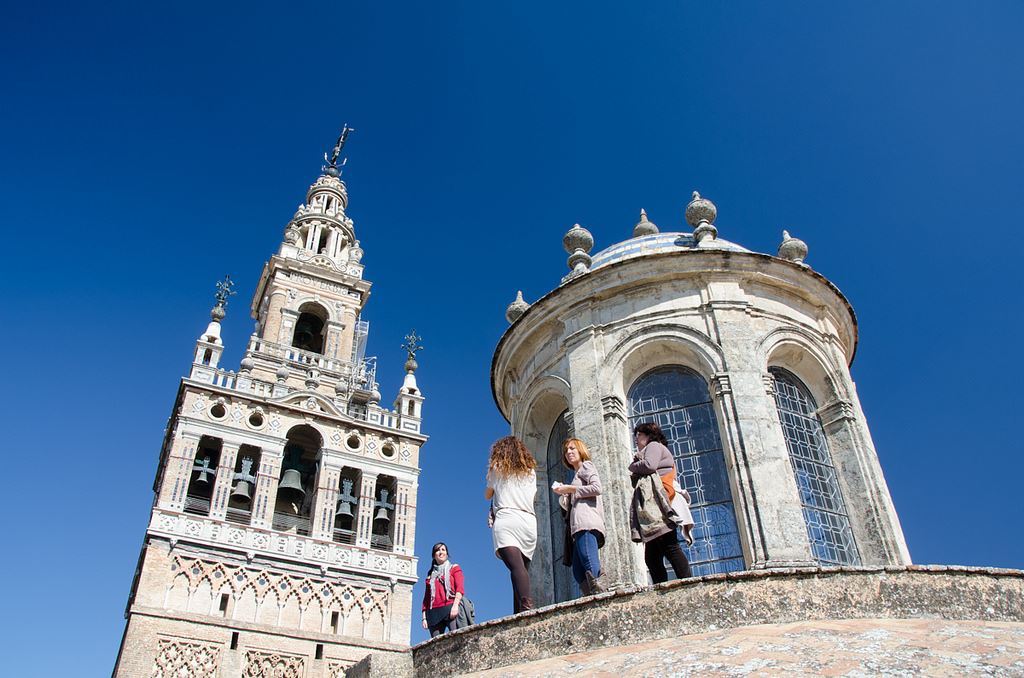
Views of the Giralda bell tower above Seville’s Cathedral. Photo credit: Seville Cathedral Rooftops 071 via photopin (license)
3 Alhambra & Generalife in Granada
It might appear at then end of this post but this is definitely a case of leaving the best until last! In 2014, 2.4 million people visited this complex of palaces built around courtyards of flowering trees, pools and fountains. Set on a wooded hill above the city, the 14th century Alhambra Palace was built by the sultans of Granada, rulers of the last Muslim kingdom in Al-Andalus. A visit to this UNESCO World Heritage Site reveals the brilliance and spirit of the Moorish culture in Andalusia at a time when the rest of Europe was only just beginning to emerge from the Dark Ages. Why visit? We think its one of the most exciting, sensual and romantic of all European monuments. We love the palace, its courtyards and the Generalife gardens are also stunning. We’ve been in the travel business a long time and have yet to meet anybody who didn’t enjoy themselves here. We’ve written a detailed guide on visiting the Alhambra.
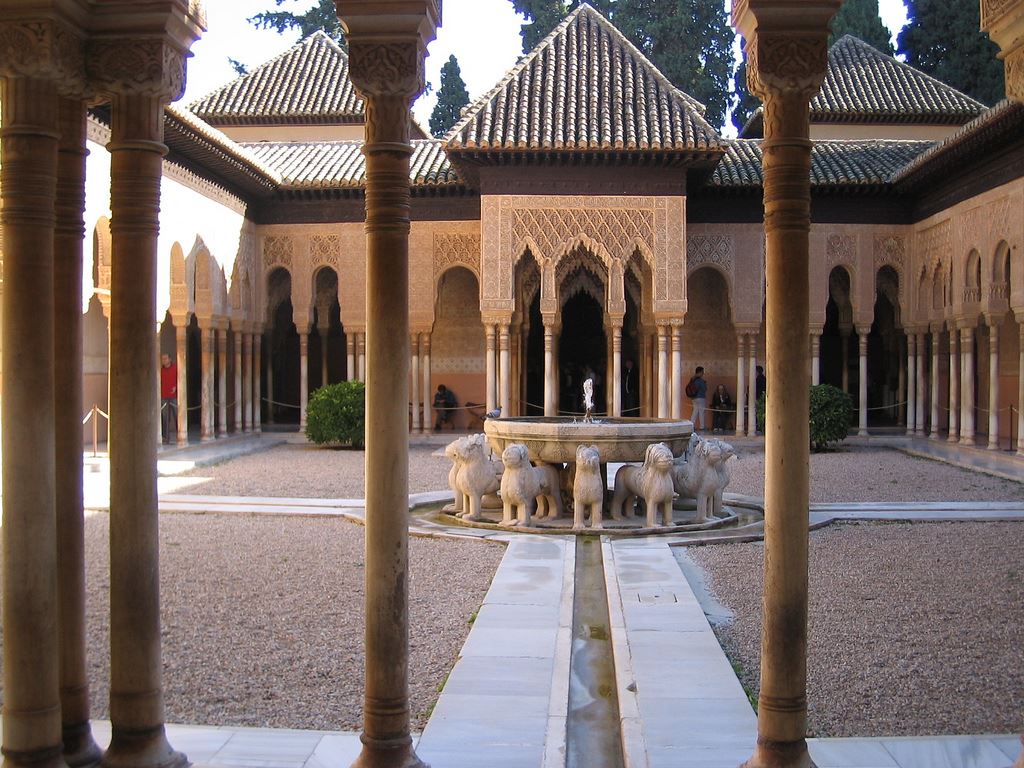
The Courtyard of the Lions at the Alhambra, Granada. Photo credit: Court of the Lions via photopin (license)
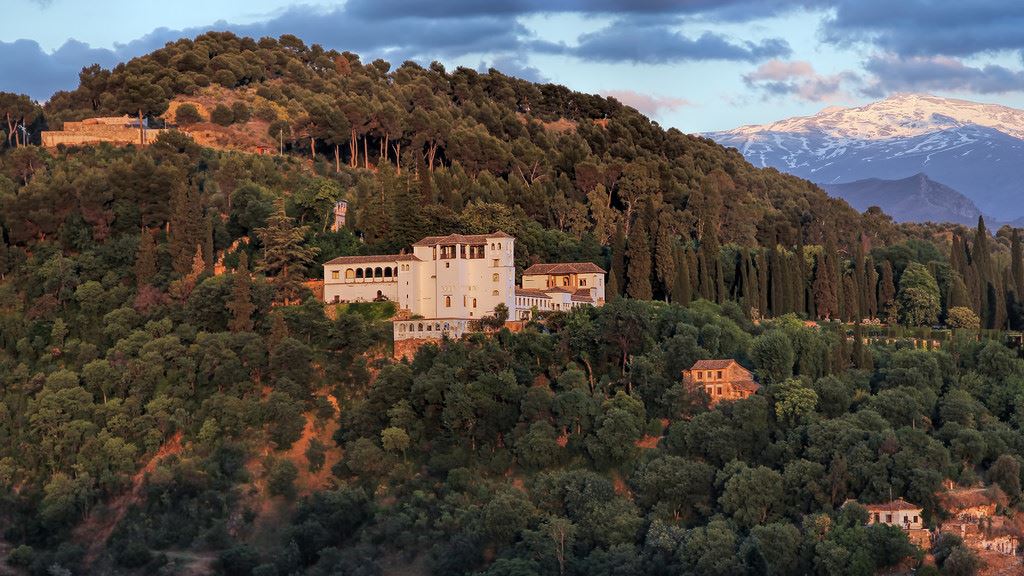
The stunning backdrop for the Alhambra in Granada. Photo credit: Generalife via photopin (license)
Pro-tip
Remember when planning your trip, that you don’t have choose between Barcelona and Madrid. The high-speed train shuttles the distance in just 2 hours 30 mins. And you can also take the train from Madrid to Bilbao which stops in Segovia (hop off and see the Alcazar there) and Burgos (stop off and see the cathedral). For travelling south, take the high-speed train from Madrid to Seville (just 2 hours 20 mins on the high-speed train) and stop off en route to see the Mezquita in Cordoba. Hop back on and spend a night or two in Seville before travelling onwards by car to Granada.
Read about Travelling by High-Speed Train in Spain, Planning Your Trip to Spain, Best Videos of Spain’s Top Attractions, Pre-booking Tickets for the Big Attractions, and Hiring a Private Driver and Guide.

